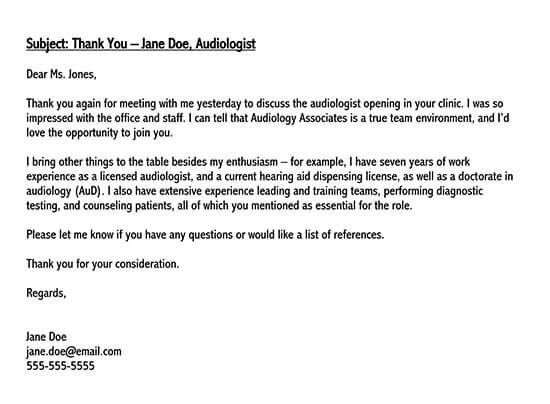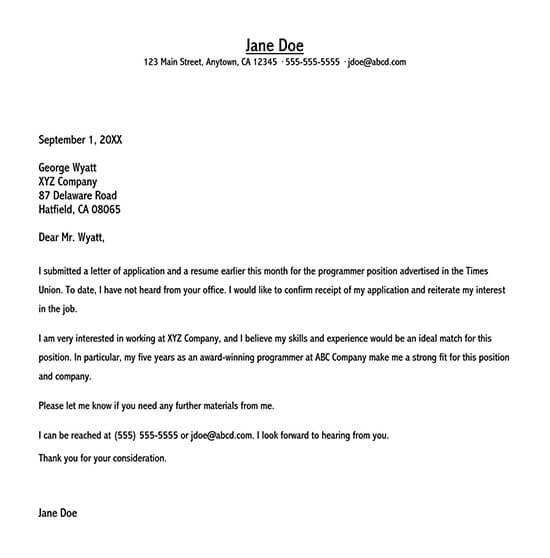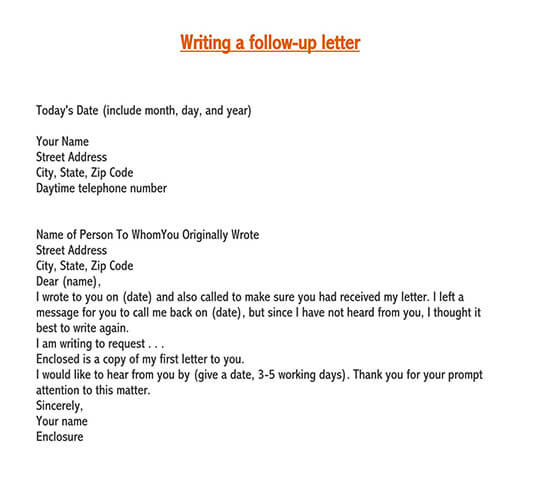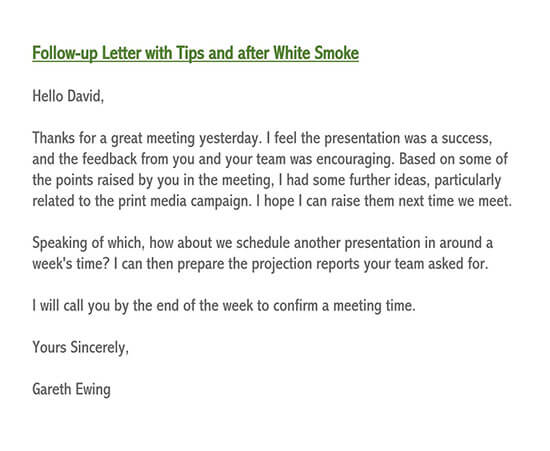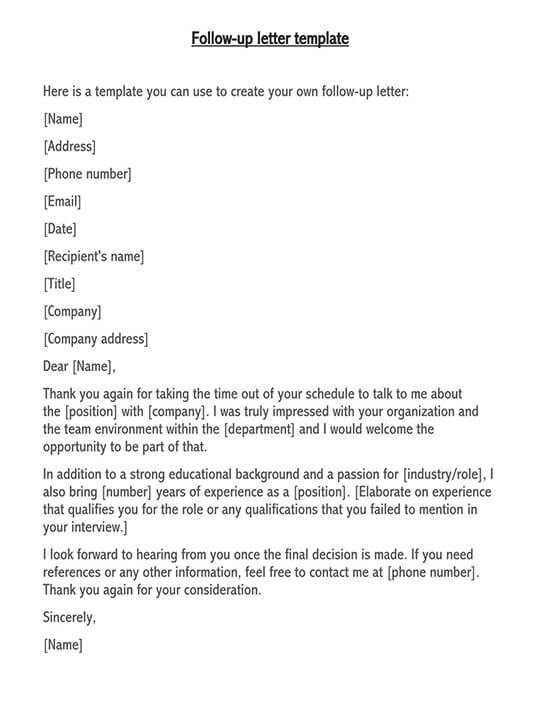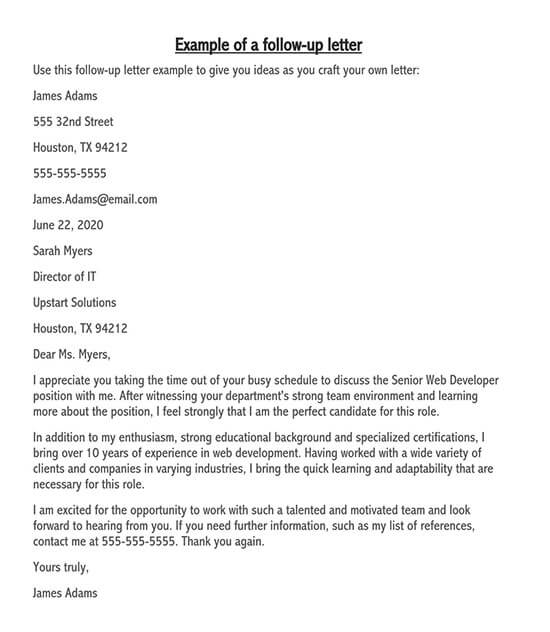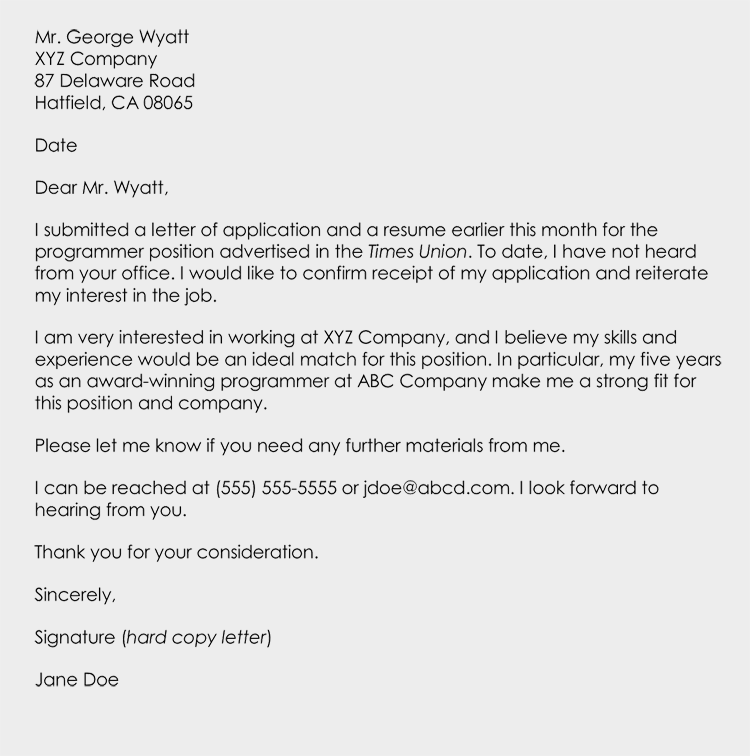A follow-up email or letter is a useful tool, if properly utilized, to help an individual send information, thank another individual, get a response on a matter, inquire about the current status, show interest, get a sale, and generally stay relevant in any particular situation. Various individuals use this form of writing for different reasons, ranging from business transactions to job applications and job inquiries, to name a few, because it aids in allowing the person you conversed with to remember and to know more details about you and the things you talked about.
Most importantly, by writing a follow-up email or letter, you solidify the relationship between you and the person you have conversed with, leading to better communication channels and clarifying or bringing up things discussed previously.
General applications for follow-up emails are:
- Job interviews
- Business meetings
- Sales
- Networking
- Supervisor/co-worker dialogue
The majority of people are hesitant to use this excellent tool because they are worried that they may come off as persistent and irritating, but contrary to belief, by writing and sending a follow-up email at the best possible time, you better position yourself to accomplish what needs to be done. So, let’s dive into the world of effective follow-up email writing and help you get a better foothold in life.
How to Write an Effective Follow-up Email
Follow-up emails are effective because thought, process, and structure are poured into them to convey the desired message to the reader properly. One does not simply get up and write a follow-up e-mail because he/she wants to ascertain points or inquiries because writing, structure, and grammar errors would be detrimental to the relationship you initially built.
To build an incredible and thought-provoking follow-up email, you have to take these essential steps to ensure you accomplish your goal:
- Determine an Objective
- Open using Relatable Context
- State Purpose
- Write Subject Line
- Determine When to Follow-up
Determine an objective
Before you start writing your follow-up email, you must determine why you want to write it. By clearly defining your objective, you can better articulate your words to create a more transparent and effective call-to-action.
Primary objectives on writing a follow-up email:
- Request information: these could vary from clarifying a piece of info, get status on your job interview or job application, get updates on your deal or negotiation, and clarify if you landed the job.
- Request a meeting: these could vary from just wanting to exchange ideas, give a sales pitch, ask for a favor, and receive feedback for previously discussed topics.
- Catching up: this usually happens to a friend whom we haven’t spoken to for a while, then we receive relevant updates with them and wish to congratulate or discuss it.
- Thanksgiving: this usually happens after a job interview, a meeting, and in general, during the early stages of building a relationship.
Open with a common point of interest
Bear in mind that the individual, whom you wish to send your follow-up email to, has conversed and interacted with various individuals in the past days, and the chance of him/her forgetting you is relatively high. Opening the conversation by stating a common point of interest, a standard connection, or a shared experience will help that individual better remember who you are. Doing so, will make them easier to reply correctly and give you the information you need, which would then help in progressing the relationship.
State purpose
Don’t beat around the bush and clearly state the reason on which you’d like to follow up that individual on. By clearly stating the reason behind the letter, you reframe the state of mind of both parties that a particular event or idea needs to be expounded and eventually resolved. Stating your purpose would then allow the concerned individual to prepare, so that time will be efficiently spent in resolving the idea.
Write a concise subject line
Since we live in an age where the traditional “snail-mail” has been replaced with the more modern and efficient e-mail, we should write a clear and eye-catching subject line. Everyone receives various e-mails throughout the day, ranging from spam to work, which is why it is crucial to catch the eye of the recipient immediately so that your letter will not get drowned out.
By writing a practical and concise subject line, you inform the reader, without having to read the content, about the purpose of the e-mail as well as other essential matters which would then lead to him/her opening the letter.
Determine when to follow-up
The phrase “there’s a time for everything” also applies to follow-up emails. Generally speaking, various types of inquiries, needs, updates, and dealings fall under different categories; thus, each also has different times in which you should send them
- 24 hours – for interviews or phone screenings and after a meeting or conference
- 48 hours – after submitting a job application and work-related matters
- One week – job application updates, sales pitches, and meeting requests
- One month – people you’ve met in a conference, meet-up, or any professional organization
- up to 3 months – for catching up with friends
These are just general guidelines, and it still depends on your specific circumstance whether these times apply. As a general principle, it is still best to follow any specific instructions you were given throughout the course of the conversation or the like.
Follow-up emails are usually formatted in formal business style. Here is more information about how to format a follow-up e-mail or letter.
